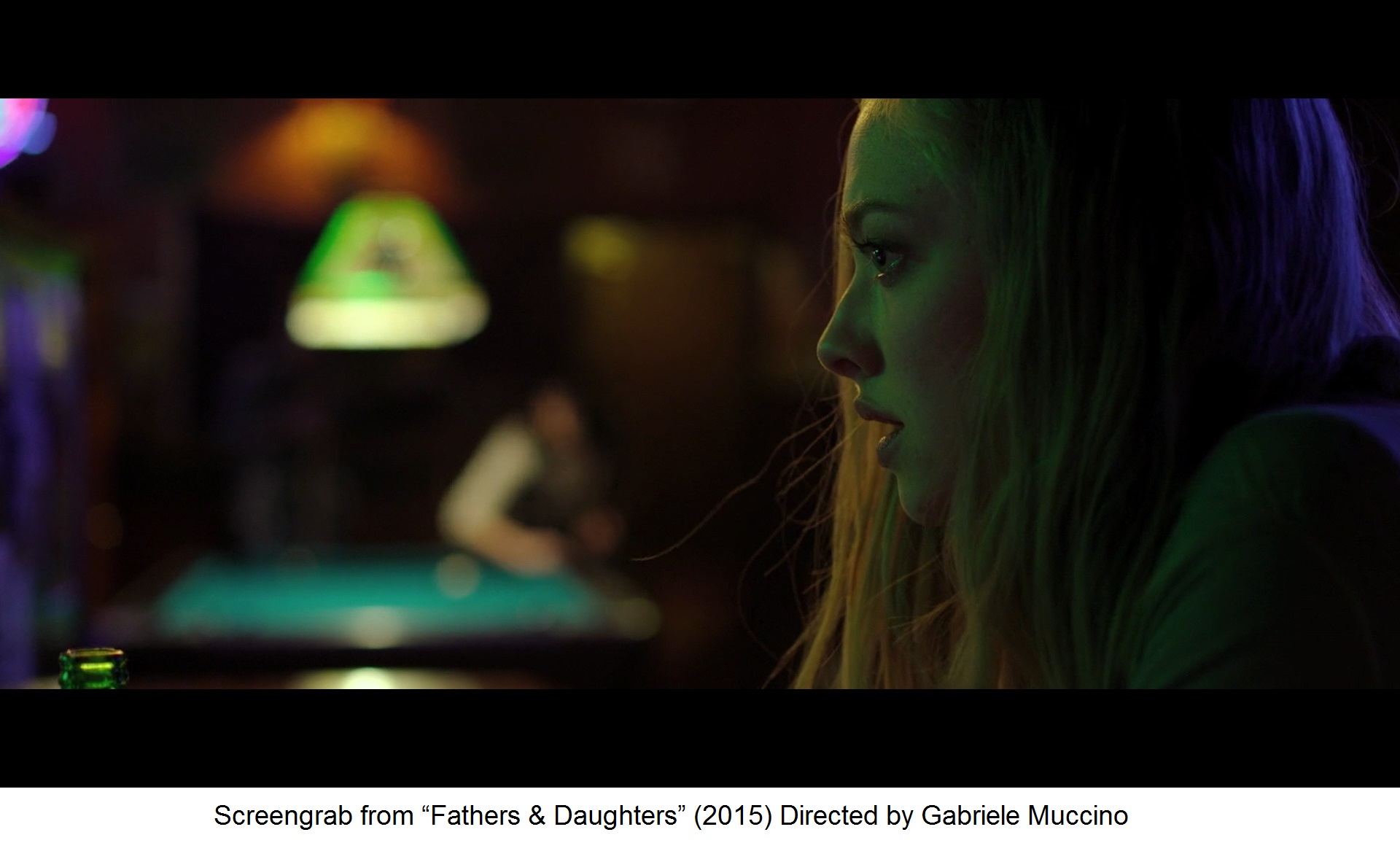Depth of Field: Focusing on Character & Story
In the world of filmmaking and cinematography, Depth of Field can play a critical role in manipulating what your audience sees. While it may be an overlooked component to the vastly complicated creation of a film, I want to make sure everyone knows that it shouldn’t be.
Depth of field (Montage) by Fabriccio Díaz from Fabriccio Díaz
Depth of field is as important as your composition or picking a focal length. It’s how you set the level of intimacy in a story or how you direct where the audience should be putting their focus in the frame. It’s the emotion, the punctuation, and the eyes of the story in filmmaking.
So let’s further discuss how depth of field can help set up an audience’s expectation in the scene. Depth of field and focus go hand-in-hand for this scenario. If you want to create what we call “shallow” depth of field, this will limit what the audience can see beyond the point of critical focus. If an object (and/or subject) is sharp in the mid-ground, everything either in the foreground and background will be soft (blurred). This isolates the object in critical focus and helps punctuate it for the audience — it draws their eyes to it.
How can this be beneficial when executing a scene? Well, what if you wanted to deliver multiple pieces of information or intertwine multiple storylines in one single frame? Using shallow depth of field gives you the ability to shift between said information and direct the audience to what is important in the moment. At the beginning of the scene, if the key piece of information is in the foreground, you can fix the audiences to those details. If halfway through the scene, a new key piece of information is in the background, you can rack focus to that and tell the audience, “Hey, look at this now!”
A director that comes to mind that has really mastered telling multiple stories in one frame is Bong-Joon Ho winner of the 2020 Oscar for his much-celebrated movie “Parasite” – subject of our cinematography deep dive in The Look Of series.
Most notably in his (2003) feature film, Memories of Murder, Bong-Joo Ho utilized the technique of two storylines happening at once. While not all of it was in shallow depth of field, it’s great to see a director masterfully orchestrate complex ensemble scenes and sequences.
“Memories of Murder” (2003) – Trailer – Directed by Bong Joon-Ho
On the opposite end of the spectrum, we have what we call “deep” depth of field. With this technique you aren’t isolating a specific object or subject. For the most part, the whole composition is in focus showcasing your entire frame. What are the advantages of doing this? It can work well for shots that feature landscapes or more grandiose settings. It helps place the action in the world and helps create cinematic-realism for the audience.
The highly celebrated filmmaker Stanley Kubrick was a big fan of using deep depth of field in his films. For example, in his 1987 Vietnam war film, Full Metal Jacket, he had a specific lens made that kept everything in focus. Meaning that everything from close focus to infinite was sharp. Why did he do this? How would this help the story? He employed this lens during the boot camp scenes to not single out any “one” soldier. He believed that during this part in a soldier’s career, they are all equal. So to him, he needed every soldier in the composition to be in critical focus.
Scene Snippet from “Full Metal Jacket” (1987) Directed by Stanley Kubrick
He accomplished his goal by creating an equal playing field for the soldiers in boot camp. This is utilizing depth of field to its full effect and understanding how it can connect characters together. Whether it be soldiers preparing for war, a family sitting down for dinner, or two characters in a heated discussion, depth of field can help manipulate your audience’s understanding and expectations of what is unfolding on the screen.
Let’s take a look at my (2015) feature film, Fathers & Daughters. I utilized “shallow” depth of field on this production to manipulate the audience with Amanda Seyfried’s character’s perspective.
How did I go about capturing this? We had used the MōVI to create this feeling of energy that was not “brick and mortar.” Her camera was not on a dolly and it had no stability to it. It had this specific energy that only a MōVI can create. What it did was create a foundation that was more like sand. A foundation that was ever-shifting and had cycles to it. I also wanted to take that another step further and say, okay, this is Katie. She’s just in her world. How she goes about her day is through a self-centered approach. By using shallow depth of field, you can really hone in that centric nature to her because the background and what’s around her doesn’t really matter. It’s just her and that’s it.
Scene snippet from “Fathers & Daughters” (2015) Directed by Gabriele Muccino
I also use shallow depth of field to go into the depth of a character and that emotion of what he/she is feeling; not being worried about the background and not being worried about all the stuff that is on the peripheral.
You have to be careful with how much shallow depth of field you use. If you’re shooting a 5D, you really don’t want to be in the 1.4 range or the 2.0 or even the 2.8 range because you’re not even going to have each eye in focus. I always find that it’s a little strange if the nose or the eyes are out of focus. If you’re focused on his or her eyes and their nose is out of focus, it’s kind of weird. I try to create enough depth in this shallow depth of field to be able to hold the nose as well as the eyes. With the one-third, two-third rule, you have to drift your focus a little to the front so you can hold that eye and hold the nose.
With depth of field, if you focus at five inches, or let’s say five feet, it’s going to hold a third of the stuff in focus in front of the focal plane, and two-thirds of the amount of focus behind the focal plane. This is the one-third, two-third rule. You want to make sure that his or her eyes are in focus as well as not making the stuff on her face or his face a little too soft.
There are obviously times when you want your audience to be confused. You’re not sure where this person’s headspace is. You can use shallow depth of field to be able to do that. It beautifully creates confusion by obstructing the audience’s sense of focus. If a character is not really understanding or not even a part of the world that he or she is in, you can use this technique to help the character’s emotion and character’s arc. A perfect example is something like this: say your character is kind of lost in the beginning and confused and is not understanding. You use shallow depth of field to be able to accent that, to take that character on that journey.
The lens is a magical tool and depth of field is the essential piece to the puzzle. Without manipulating the audience’s perspective, it would be hard to guide an audience through a narrative. On your next project, consider what the “Key Components” of the scene are. What is the audience supposed to take away from the scene? How can you mask that and make the audience work for it? Remember that you ALWAYS, ALWAYS, ALWAYS want to be one step ahead of the audience. Don’t show your hand right at the beginning of the scene — let their mind work for it. The moment the audience knows what’s going on fully in the scene, what’s the point?
Use depth of field to your advantage, test the waters, and see how this can be a vessel to ultimately shape your film. I look forward to seeing what you come up with!
Equipment:
 |
 |
 |
 |
 |
 |























Nice post! We tried to sparingly use SDOF for our client projects. Trying to convince a corporate client that they dont need “that look” in every shot is difficult. Hoping DR becomes the new SDOF in the future.
Dear Shane,
First of all, thank you for this very insightful tutorial.
I am glad you can find so many, that describe the different aspects of film making in such great detail.
It helps me a lot finding these great articles.
Did you use one lense in the scene snippet from “Fathers and Daughters” or different ones? If yes, which ones?
I always try to guess which lenses are used, but can never check, if my guesses are correct, so I just wanted to ask to double check, if I am thinking in the right direction.
I’m thinking for example, the the lense is something between a wide and a 50mm…
For example at 0:19 the change from deep focus to shallow depth of field is very gradual and less abrupt, reminding me both logically and emotionally of the scenes from full metal jacket, so basically it seems to have the components of a deep depth of field of a wide angle lense, where there is nothing so out of focus that isn’t too blurry or hard to define.
but at 0:24, where the depth of field is more shallow, things look quite natural and less distorted, which is why I would suspect it might have been shot with a 50mm lense?
Then after the next cut at 0:31 (the push-in to Katie’s face) I feel emotionally close to the character, which is the effect wide angle lenses had on me so far.
At 0:56 we are still in the same push in. I get that, that it has only been cut back and forth between the reverse-shot of the lady behind the desk, but if I would not have seen the deeper depth of field in the beginning of the push in, I would maybe think the scene was also shot with a 50, because the background of the scene is very blurry, but looking at her face I still feel the emotional closeness of a wide angle lense.
Between 1:02 and 1:05 the rack focus transitions between these two different feelings I had, which is why I think the scene has been shot with only one focal length. But which one? and do you happen to have more tips on what else I can look out for when I am trying to tell with which lense a scene has been shot,. Am I asking myself the right questions?
I think the thing that confuses me the most is the question “How much shallow depth of field is possible with a wide angle lense the further you move away from the character?”
Sorry for this long comment. If you do not have time to read or to answer, I fully understand and I hope my question does not come across to unprofessional.
Thanks again for the great tutorial.
Keep up the great work!
Best,
Matze